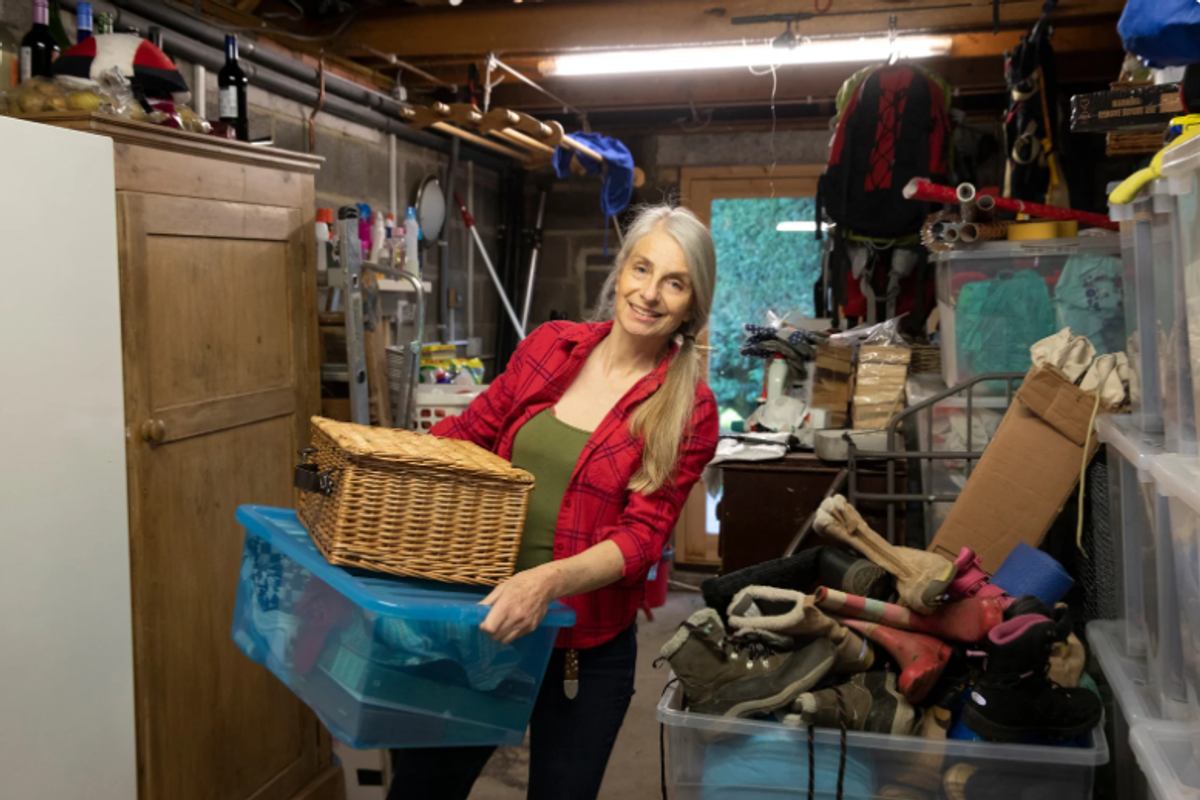Anyone who has experienced the loss of a loved one knows that grief is weird. It's not linear. It's not simple or straightforward. It's doesn't fit neatly into a box or align with tidy definitions.
Grief is all the more complicated when you lose someone who, by the natural order of things, shouldn't have died. Some deaths are difficult but expected—we know at some point we will lose our grandparents, our parents, and others who are generations older than we are. But when a younger loved one dies, especially when we ourselves are young, there are loads of complex feelings to grapple with.
As 22-year-old TikToker Clara Rose Bell says, "I don't see a lot of young people talking about grief. It's isolating." Bell's younger brother died in June, and she shared some honest musings on her grief journey in a video that's since gone viral. So many people relate to her thoughts, and her articulation of some of the harder parts of grief to put into words is giving comfort.
Bell begins by saying that she feels like she's supposed to say she "lost" her brother, like she's not supposed to say "he died," but that's what happened.
"Grief is so confusing," Bell says. "I never thought I'd be walking through heavy grief like sibling grief at 22. It's so devastating, honestly. I know you're supposed to like package it up and give people a version of your grief that's like, 'Hard, but getting through it!' you know, 'Hard, but purpose!' Sometimes I don't feel like that. Sometimes I just to be like, 'No, actually, this freaking sucks. This is horrible.'"
But, she says, the first thing people learn about grief is to try to not make people uncomfortable with it. People don't want to be around people who are sad or depressed all the time—it's draining.
"I get that," Bell says. "But that's also kind of grief, though. I spend a lot of time sad. And I hate that that makes me a depressing person to other people."
She says it feels like you're not supposed to talk about grief that much, like you're just supposed to walk through it alone. And a lot of people won't say a word about your loved one's death, perhaps because they don't know what to say and they hope that you'll just process it and move on.
"I'm never going to move on," Bell says. "I will talk about it for the rest of my life. I will grieve it for the rest of my life…there will never be a day that comes when I don't grieve him and don't wish that he were here."
@notclarabellmissing you every second of everyday 💙 my beautiful little brother patrick. The world is cold without you. But I know we’ll see each other again 💙🪽 To know him was to love him, a soul like no other.
She shared that one interesting thing about grief is that it has made her fear death less—not seeking it out, but not being afraid of it, either.
"I'm not afraid of dying," she says. "Sometimes I am afraid of living. Sometimes I'm afraid of living in a world without him, celebrating holidays without him."
And then there's the fact that she's a mom of young children, so she's trying to create beautiful, magical holiday memories for them while at the same time struggling through the "crushingly hard" grief of the first Christmas without her little brother. She knows that every holiday will be "quietly sad."
"I don't feel like I see a ton of young people talking about grief," Bell says. "It's isolating, and it's really isolating to go through at a young age, so I'm going to talk about it."
Bell acknowledges that there are so many people who are grieving and most people wouldn't know.
"Sometimes when I'm at the grocery store and I'm in line, I almost think to myself, 'I wonder if anyone in this line is grieving,' because it feels like a whole other universe that you can't fully understand until you go through it. What it's like to live in devastating grief, to feel like you can't get up, and yet get up."
Bell shared that the "time heals all wounds" saying doesn't ring true at this point for her. "This is something that feels like it hurts more with time," she says. She takes it day by day, but there's a looming question of how it's going to feel, this missing her brother, years from now if it hurts this much after months.
She says that people's kind words have been "monumental" and "so impactful," even when it's from perfect strangers on the Internet. Seeing that people she doesn't even know, who have no obligation to care about her and her tragedy, will go out of their way to provide thoughtful words of comfort and kindness has her feeling hopeful for the world at large.
"One of my hard grief points is hopelessness for the world," Bell says. "So many bad things are happening. So many people are sad. It's just hard to feel hopeful sometimes. Like, is the world all bad? But it's the little things. How can the world be all bad when people exist that are caring with no obligation to?
Bell says she'll cycle through multiple emotions every hour. "I don't know if I believe so much in the steps of grief as much as it's like a circle of anger, denial, sadness, acceptance, kind of over and over. At least that's how it feels for me a lot of the time."
She also described the pressure she feels to "get over" her grief or to "handle" it, but she's realized that grief is proof of love, or "love with nowhere to go." Sometimes she just wants to be left alone in her sadness, to feel it all because, as she says, "Missing him is the closest I have to having him right now."
Bell does say that getting up to face the day has gotten a little bit easier than it was in the beginning, but some days and moments still feel impossible. "Mostly, I just miss him," she says.
@notclarabellFor me, grief changed the way I live. As hard as it is sometimes, I try to give life my all — to slow down and appreciate things and people in a deeper way. I’m hyper aware of the experiences and opportunities he’ll never get to have, and that hurts more than words can say. Every sunset, every beautiful day, I think of him first — how he would’ve loved it, and how he doesn’t get that chance. Because of that, I live for him. I try to notice every small moment, every person, every gift in my life. To live in the present and remember that our time here is fragile. And to keep finding purpose and meaning, while I have the opportunity to. 🖤
So many people commented with appreciation for Bell putting words to feelings they themselves have gone through in their own grief journeys, especially those who have experienced sibling loss:
"Let me tell you, I’m going on 3 years in December without my little brother. And I cried while watching your video. You never get over it. I miss him so much. I hate that we are able to relate but like you said at least we aren’t going through it alone. Sending love!"
"I lost my brother over 10 years ago who was my best friend💔 & everything you said is true. It never goes away & you just learn to cope better. I miss him everyday. Sometimes I talk about him without crying & other times I barely can get the words out without nearly sobbing. The milestones and holidays are always hard. Sending big hugs and love. 🤍🤍"
"I lost my brother 3 years ago, I’m so sorry you’re going through this. It’s scary and weird and it won’t feel real for a while, the first set of holidays are the hardest and it never really feels right again, but please don’t lose the will to celebrate holidays, birthdays, milestones, etc."
"I lost my sister when she was 18 and I was 20. 10 years later and I’m still not over it. It was right before the holidays too. I remember my mom calling us saying she was at the store and she forgot what she buys for thanksgiving dinner. My brothers and I laughed but looking back I think it was a huge moment of grief for her and I still think about that so much."
"Sibling loss is one of the worst and hardest thing i’ve ever had to go through, it’s confusing and so so unfair. everything you said is so completely valid."
When we share our experiences and put them into words, it helps others find expression for their own feelings. That's extra important for grief, which is particularly complicated. It's also important to know that we're never alone in our grief—sometimes we just need a reminder.
You can follow Clara Rose Bell on TikTok.




 Stayin Alive GIF by Bee Gees
Stayin Alive GIF by Bee Gees 

 Coworkers laughing in the hallway. via
Coworkers laughing in the hallway. via A man and woman enjoying a conversation.via
A man and woman enjoying a conversation.via